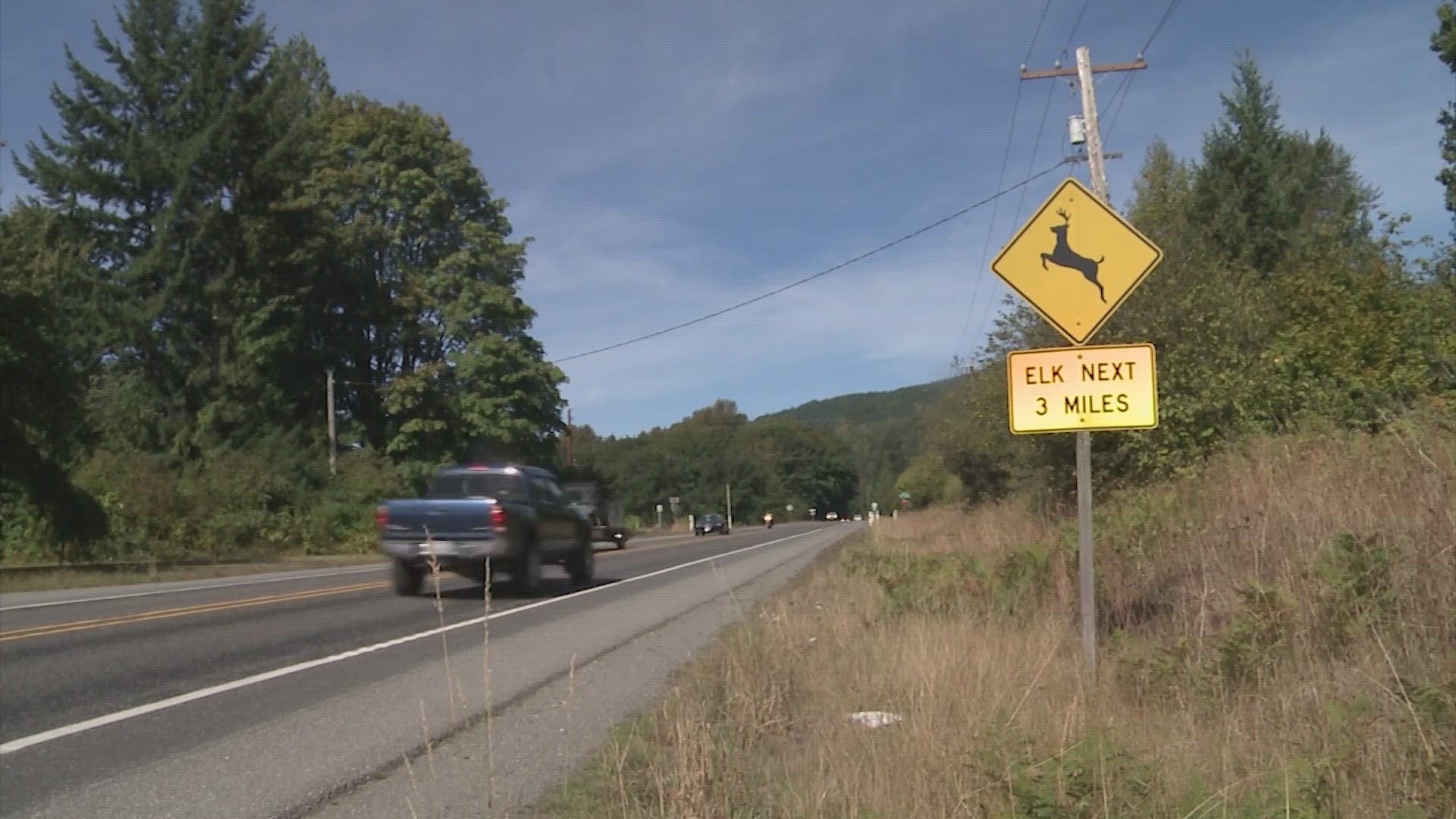SKAGIT COUNTY, Wash. — A Skagit County man is dead after swerving to avoid an elk on Highway 20 and crashing into a telephone pole on Sept. 8.
Local people say elk have been causing problems for years and it was only a matter of time until something like this happened.
Resident Larry Jensen looks at the property that used to be his potato farm, which was overtaken by unwanted visitors. Elk began eating his crops, tearing down his fences and defecating on his produce, making it unsellable.
"It was immediate," he said. The herds kept coming and Jensen says the state wasn't much help.
He ended up having to sell his farm.
"Everywhere we turn we're not getting any help, and as a consequence, crop farmers are moving out of the area," he said.
The elk aren't just playing a part in farm closures, but in the loss of life.
On Sept. 8, a man from Concrete, Washington, crashed into a telephone pole while swerving to avoid an elk on Highway 20.
He was on his way to work.
An online fundraiser by Savanha Martin, titled "Help for Nick Verner's family," states the victim Nick Verner "was 29 years old, just bought his first house, and raising his 18 month old son with his beautiful fiancé Kassie. Their wedding date was set for September 22nd."
In order to thin the elk herds, Jensen says the state needs to allow more hunting of elk. He believes this tragedy could've been avoided.
"Had we been allowed to harvest and do what we wanted to do, this young man might be alive today," Jensen said.
There are about 1,600 elk in the North Cascades and the Washington Department of Fish and Wildlife (WDFW) wants to increase that number by 100 to 400. The department calls the animals "an important resource providing recreational, aesthetic, and economic benefits to Washington residents."
Local tribes also want the number of elk increased for hunting and cultural reasons.
"Our objective is to reduce negative impacts and costs landowners, agriculture, and local communities incur, while respecting that elk are native to the North Cascades region, including the Skagit and Nooksack watersheds—naturally inhabit valley bottoms, especially during winter months—and are of significant value for hunters, wildlife enthusiasts, Tribal Co-managers, and many other Washingtonians," according to a WDFW spokesperson.
The department also has "wildlife conflict staff" who provide expertise, support and assistance for landowners with fencing and installation, reimburse commercial farmers for the cost of areas disturbed by elk, and offer other elk deterrents, including authority to remove elk with designated hunting permits, according to the spokesperson.
But despite all that, the elk remain troublesome for the community.
"We've had two deputy vehicles completely totaled. We've had an ambulance with an accident. The school busses with the kids are always afraid because they leave in the morning when the elk are around," said Bill Schmidt, president of the Skagit County Farm Bureau. "The accidents are just getting worse and worse, and we knew eventually there would be a death, which is very, very tragic."
The WDFW spokesperson said they are aware of the Sept. 8 fatal incident and, "We extend our condolences to the victim and their family."
Resident Larry Jensen believes it's only a matter of time until there is another tragedy.
"We really need to have a solution and it's not happening," he said.
Washington is at the height of elk breeding season, according to WDFW, which is when the elk are much more mobile and likely to cross roads. The department reminds everyone to pay attention to elk crossing signs and slow down.

